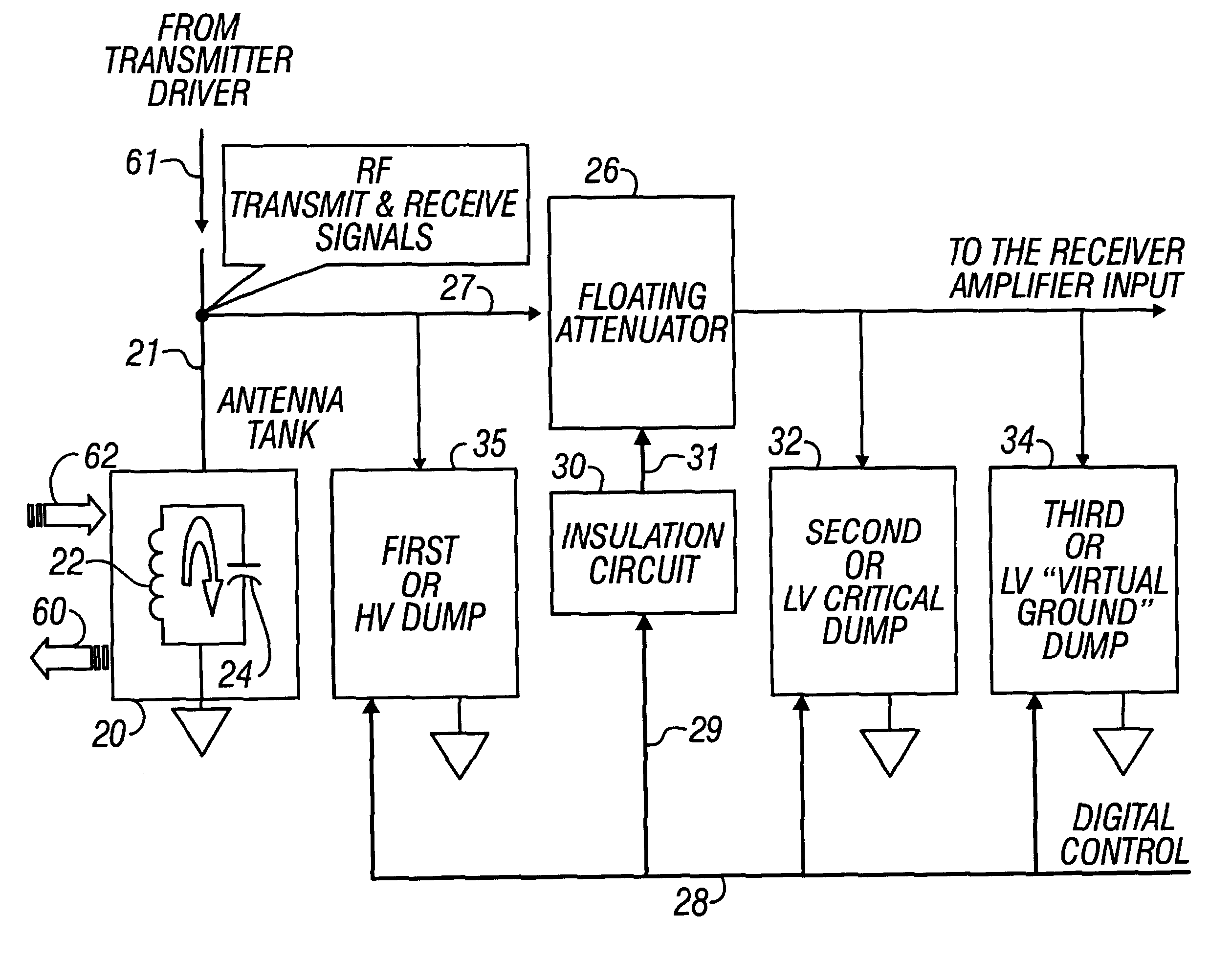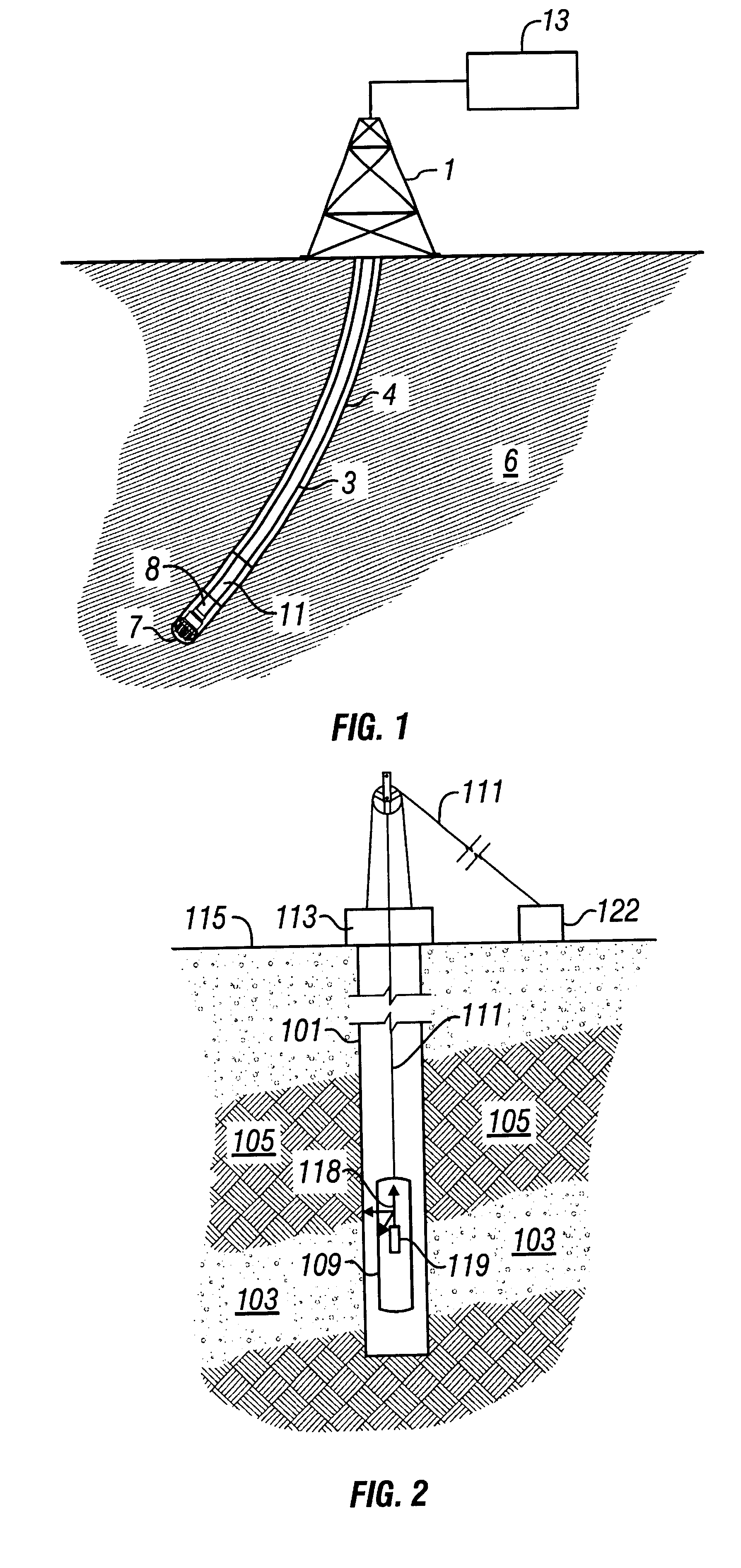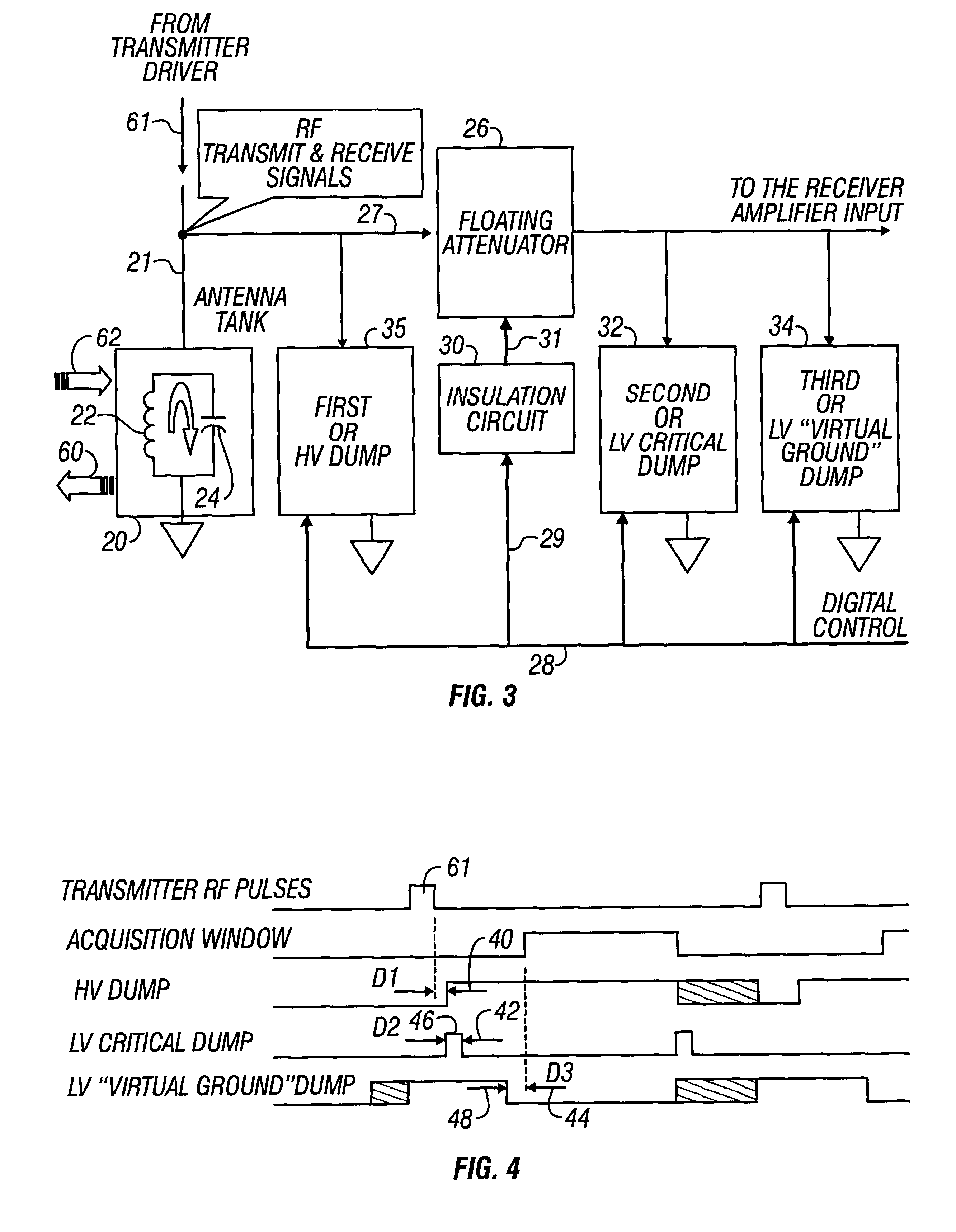Active signal conditioning circuitry for well logging and monitoring while drilling nuclear magnetic resonance spectrometers
a technology of active signal and well logging, which is applied in the direction of reradiation, measurement using nmr, instruments, etc., can solve the problems of circuit saturation, circuitry saturation, and protection of receiver circuitry, and achieve the most severe "electronic" dynamic range design problems, circuitry saturation,
- Summary
- Abstract
- Description
- Claims
- Application Information
AI Technical Summary
Problems solved by technology
Method used
Image
Examples
Embodiment Construction
A drilling operation environment for deployment down hole of an NMR tool according to the present invention is shown deployed in a monitoring while drilling environment in FIG. 1. As shown in FIG. 1, a drill rig 1 drives a drill string 3 that, which typically is comprised of a number of interconnecting sections. A down hole assembly 11 is formed at the distal end of the drill string 3. The down hole assembly 11 includes a drill bit 7 that advances to form a bore 4 in the surrounding formation 6. A portion of the down hole assembly 11, incorporating an electronic system 8. The electrical system 8 may, for example, provide information to a data acquisition and analysis system 13 located at the surface. The electrical system 8 includes one or more nuclear magnetic resonance (NMR) tools. The NMR tool includes a NMR spectrometer, which is well known in the art. The electrical system comprising the NMR tool and spectrometer further comprise the active signal conditioning circuitry for the...
PUM
 Login to View More
Login to View More Abstract
Description
Claims
Application Information
 Login to View More
Login to View More - R&D
- Intellectual Property
- Life Sciences
- Materials
- Tech Scout
- Unparalleled Data Quality
- Higher Quality Content
- 60% Fewer Hallucinations
Browse by: Latest US Patents, China's latest patents, Technical Efficacy Thesaurus, Application Domain, Technology Topic, Popular Technical Reports.
© 2025 PatSnap. All rights reserved.Legal|Privacy policy|Modern Slavery Act Transparency Statement|Sitemap|About US| Contact US: help@patsnap.com



